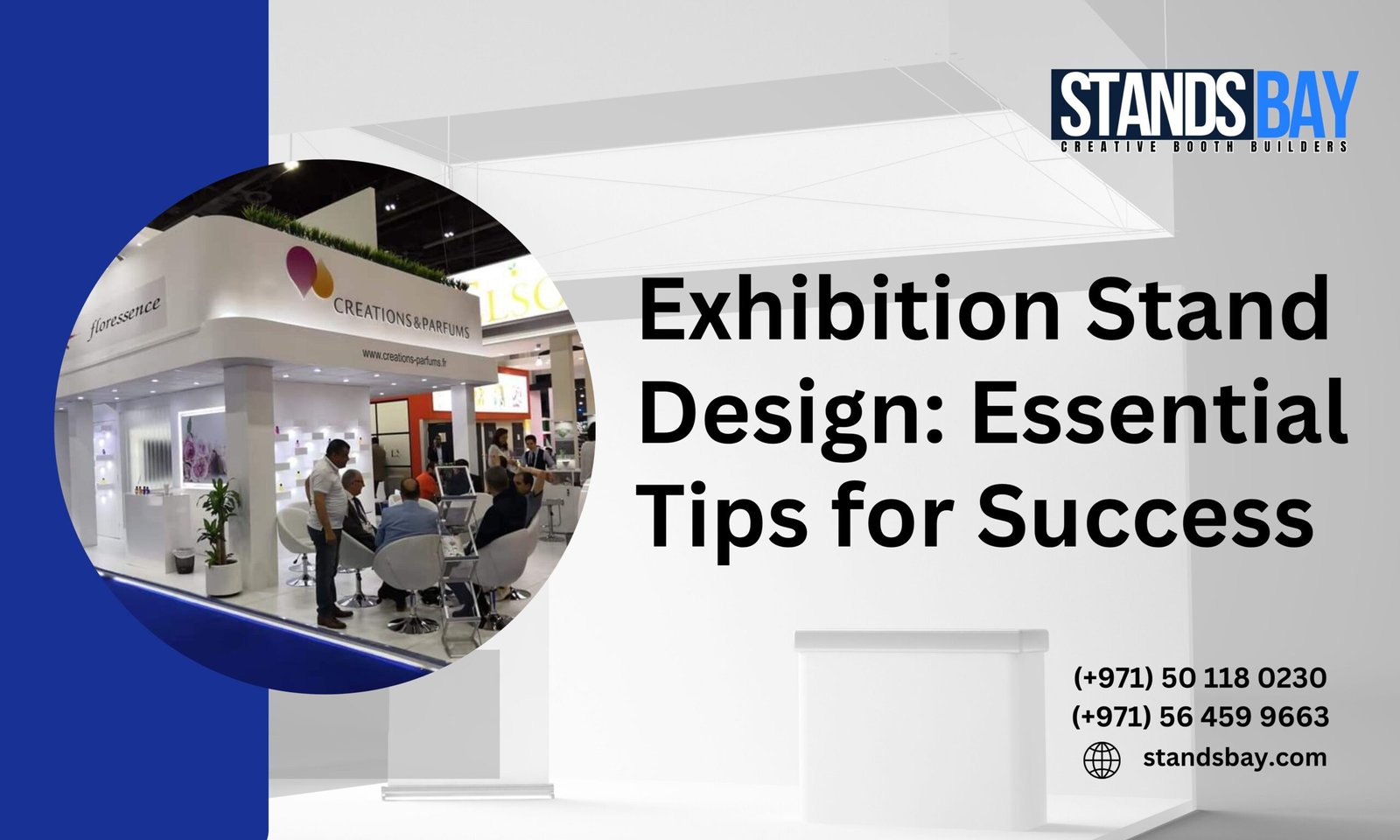Creating an exhibition stand that not only attracts attention but also effectively communicates your brand message is a crucial aspect of succeeding at trade shows and exhibitions. With so many businesses competing for attention in these events, it is essential to ensure that your exhibition stand design stands out and leaves a lasting impression on potential clients. In this article, we will explore the essential tips for successful exhibition stand design, including best practices, creative ideas, and strategies that will help you maximize your impact.
Understanding the Importance of Exhibition Stand Design
Exhibition stands are more than just physical spaces; they are powerful marketing tools that can influence how potential customers perceive your brand. A well-designed exhibition stand serves as the face of your brand at a trade show, and it needs to convey your brand’s values, message, and personality in a way that resonates with your target audience.
When you participate in a trade show or exhibition, you are competing with numerous other businesses for the attention of attendees. Your exhibition stand design plays a pivotal role in determining whether or not people will stop by your booth. Therefore, understanding the importance of exhibition stand design is the first step toward creating a successful display.
Best Exhibition Stand Design Tips
- Set Clear Objectives: Before you start designing your exhibition stand, it’s essential to define what you want to achieve. Are you looking to generate leads, build brand awareness, or showcase a new product? Setting clear objectives will guide your design process and ensure that every element of your stand aligns with your goals.
- Know Your Audience: Understanding your target audience is crucial for designing an exhibition stand that resonates with them. Consider their preferences, needs, and pain points, and tailor your design to address these aspects. This could mean incorporating interactive elements, providing comfortable seating, or offering hands-on product demonstrations.
- Focus on Branding: Your exhibition stand should be a visual representation of your brand. Consistent use of your brand’s colors, logo, and messaging across all elements of your stand is essential for brand recognition. The design should also reflect your brand’s personality, whether it’s professional, playful, innovative, or luxurious.
- Keep It Simple: While it’s tempting to include as much information and as many elements as possible, simplicity often leads to better results. A cluttered stand can overwhelm visitors and dilute your message. Focus on one or two key messages and make them the centerpiece of your design.
- Use High-Quality Graphics: High-resolution graphics are essential for creating a professional and polished look. Poor-quality images or pixelated logos can make your stand look unprofessional and reduce its effectiveness. Invest in quality graphics that clearly communicate your message and attract attention.
- Incorporate Lighting: Lighting is a powerful tool that can enhance the visual appeal of your stand and draw attention to specific areas. Use a combination of ambient, task, and accent lighting to create an inviting atmosphere and highlight key products or messages.
- Consider the Flow: The layout of your stand should encourage visitors to move through the space naturally. Avoid creating bottlenecks or dead ends that could deter people from exploring your stand. Instead, design a layout that guides visitors from one area to the next, with clear paths and signage.
- Think About Engagement: Engaging visitors is key to a successful exhibition stand. Consider incorporating interactive elements such as touchscreens, virtual reality experiences, or live demonstrations. These not only attract attention but also provide a memorable experience that can leave a lasting impression.
How to Design a Successful Exhibition Stand
Designing a successful exhibition stand requires careful planning and attention to detail. Here are some steps to help you create a stand that achieves your goals:
- Start with a Concept: Begin by brainstorming ideas for your stand. Think about how you want to present your brand and what you want visitors to take away from their experience. This concept will serve as the foundation for your design.
- Create a Layout: Once you have a concept, start sketching out the layout of your stand. Consider the size and shape of your space, as well as the placement of key elements such as signage, displays, and seating. The layout should be functional and allow for easy navigation.
- Choose Materials: The materials you choose for your stand can have a significant impact on its overall look and feel. Consider using materials that are not only visually appealing but also durable and easy to work with. Popular options include fabric, wood, metal, and acrylic.
- Design the Graphics: The graphics on your stand should be eye-catching and convey your message clearly. Work with a professional designer to create graphics that are visually appealing and consistent with your brand.
- Plan the Lighting: Lighting can make or break your exhibition stand. Plan your lighting carefully to ensure that it highlights key areas and creates the right atmosphere. Consider using a combination of spotlights, LED strips, and backlighting to achieve the desired effect.
- Test the Stand: Before the event, set up your stand in a controlled environment to see how it looks and functions. This will give you an opportunity to make any necessary adjustments and ensure that everything is working as it should.
- Train Your Team: Your stand is only as effective as the people who man it. Make sure your team is well-trained and understands how to engage with visitors, answer questions, and represent your brand.
- Evaluate and Improve: After the event, take time to evaluate the success of your stand. What worked well? What could be improved? Use this feedback to make any necessary changes for future events.
Essential Elements of Exhibition Stand Design
To create an exhibition stand that captures attention and drives engagement, it’s essential to incorporate certain key elements into your design. Here are the most critical components:
- Signage: Your signage is one of the first things visitors will see, so it needs to be clear, concise, and on-brand. Use large, bold fonts and contrasting colors to ensure your message is visible from a distance.
- Displays: Whether you’re showcasing products, services, or information, your displays should be well-organized and easy to understand. Consider using shelving, counters, or digital screens to present your offerings in the best light.
- Seating: Providing seating can encourage visitors to spend more time at your stand. Whether it’s a comfortable lounge area or a simple bar stool, seating can make your stand more inviting and help facilitate conversations.
- Storage: Don’t overlook the importance of storage. Having a place to store extra materials, giveaways, and personal belongings can help keep your stand looking tidy and organized.
- Technology: Incorporating technology into your stand can enhance the visitor experience and make your stand more memorable. Consider using touchscreens, virtual reality, or interactive displays to engage visitors in a new and exciting way.
- Giveaways: Offering branded giveaways is a great way to leave a lasting impression on visitors. Whether it’s a simple pen or a high-tech gadget, choose giveaways that are useful and relevant to your brand.
- Interactive Elements: Interactive elements such as games, quizzes, or photo booths can attract attention and encourage visitors to engage with your brand. These elements can also create a fun and memorable experience that visitors will associate with your brand.
- Lighting: As mentioned earlier, lighting is a crucial element of exhibition stand design. It can be used to highlight specific areas, create a mood, or draw attention to your stand. Consider using a combination of lighting techniques to achieve the desired effect.
Creative Exhibition Stand Design Ideas
Creativity is key when it comes to designing an exhibition stand that stands out from the competition. Here are some creative ideas to inspire your next stand design:
- Themed Stands: Designing your stand around a specific theme can make it more memorable and engaging. Whether it’s a futuristic tech theme, a cozy coffee shop, or a tropical paradise, a themed stand can help you create a unique and immersive experience for visitors.
- Green Stands: Sustainability is a growing trend in exhibition stand design. Consider using eco-friendly materials, such as recycled wood or biodegradable fabrics, and incorporating greenery or living walls into your design. Not only will this make your stand more attractive, but it will also demonstrate your commitment to sustainability.
- Interactive Displays: Interactive displays are a great way to engage visitors and encourage them to spend more time at your stand. Consider using touchscreens, virtual reality, or augmented reality to create an immersive experience that showcases your products or services.
- Pop-Up Shops: Creating a pop-up shop within your exhibition stand can provide visitors with a unique and memorable shopping experience. Use stylish displays and eye-catching signage to create a mini retail environment that allows visitors to browse and purchase your products.
- Art Installations: Incorporating art into your stand design can make it more visually appealing and attract attention from afar. Consider using sculptures, murals, or interactive art pieces to create a stunning visual display that reflects your brand’s personality.
- Multi-Level Stands: If you have the space and budget, consider creating a multi-level stand. This can provide additional space for meetings, product displays, or private demos, and can make your stand more impressive and eye-catching.
- Technology Integration: Incorporating the latest technology into your stand can help you stand out from the competition. Consider using virtual reality, augmented reality, or holographic displays to create an unforgettable experience for visitors.
- Custom Furniture: Custom furniture can add a unique touch to your stand and make it more comfortable and inviting. Consider creating custom seating, tables, or display units that reflect your brand’s style and personality.
Exhibition Stand Design Best Practices
To ensure your exhibition stand design is successful, it’s important to follow best practices that have been proven to work. Here are some key best practices to keep in mind:
- Consistency: Consistency is key when it comes to branding. Make sure all elements of your stand, from the graphics to the furniture, are consistent with your brand’s colors, fonts, and overall style.
- Clarity: Your message should be clear and easy to understand. Avoid cluttering your stand with too much information or too many elements. Instead, focus on one or two key messages and make them the centerpiece of your design.
- Accessibility: Your stand should be accessible to everyone, including those with disabilities. Make sure there are clear paths for people to navigate through your stand, and consider providing seating for those who may need it.
- Engagement: Engaging with visitors is crucial for a successful exhibition stand. Consider incorporating interactive elements, such as touchscreens, games, or live demonstrations, to encourage visitors to engage with your brand.
- Professionalism: Your stand should look polished and professional. Invest in high-quality materials, graphics, and lighting to create a stand that reflects your brand’s professionalism and attention to detail.
- Flexibility: Be prepared to make adjustments to your stand design if necessary. Whether it’s due to changes in the event layout or last-minute updates to your messaging, being flexible can help you adapt to any situation.
- Evaluation: After the event, take time to evaluate the success of your stand. What worked well? What could be improved? Use this feedback to make any necessary changes for future events.
- Preparation: Preparation is key to a successful exhibition stand. Make sure you have all the necessary materials, including brochures, business cards, and giveaways, and that your team is well-prepared to engage with visitors and represent your brand.
Effective Trade Show Booth Design Tips
Designing an effective trade show booth is about more than just aesthetics. Here are some tips to help you create a booth that not only looks great but also drives results:
- Focus on Your Message: Your booth should clearly communicate your brand’s message. Whether it’s a tagline, a product benefit, or a value proposition, make sure your message is front and center.
- Create a Focal Point: Every booth should have a focal point that draws visitors’ attention. This could be a large graphic, a product display, or an interactive element. Whatever it is, make sure it’s eye-catching and relevant to your brand.
- Use Color Wisely: Color can have a significant impact on how visitors perceive your booth. Use your brand’s colors to create a cohesive look, but don’t be afraid to incorporate other colors to create contrast and draw attention to key areas.
- Incorporate Technology: Technology can help you create a more engaging and interactive booth. Consider using touchscreens, virtual reality, or augmented reality to showcase your products or services in a new and exciting way.
- Offer Something Unique: To stand out from the competition, consider offering something unique at your booth. This could be a product demo, a live presentation, or an interactive game. Whatever it is, make sure it’s relevant to your brand and provides value to visitors.
- Provide Seating: Providing seating can encourage visitors to spend more time at your booth. Whether it’s a comfortable lounge area or a simple bar stool, seating can make your booth more inviting and help facilitate conversations.
- Keep It Simple: Simplicity is key when it comes to booth design. Avoid cluttering your booth with too much information or too many elements. Instead, focus on one or two key messages and make them the centerpiece of your design.
- Evaluate and Improve: After the event, take time to evaluate the success of your booth. What worked well? What could be improved? Use this feedback to make any necessary changes for future events.
Exhibition Stand Design Guide for Beginners
If you’re new to exhibition stand design, it can be overwhelming to know where to start. Here’s a guide to help you get started:
- Set Clear Objectives: Before you start designing your stand, it’s essential to define what you want to achieve. Are you looking to generate leads, build brand awareness, or showcase a new product? Setting clear objectives will guide your design process and ensure that every element of your stand aligns with your goals.
- Research Your Audience: Understanding your target audience is crucial for designing an exhibition stand that resonates with them. Consider their preferences, needs, and pain points, and tailor your design to address these aspects.
- Create a Budget: Designing an exhibition stand can be expensive, so it’s essential to create a budget and stick to it. Consider all the costs involved, including materials, graphics, lighting, and staffing, and allocate your budget accordingly.
- Choose the Right Location: The location of your stand can have a significant impact on its success. Choose a location that’s easily accessible and has high foot traffic. If possible, book your location well in advance to ensure you get the best spot.
- Work with a Professional: If you’re new to exhibition stand design, it can be helpful to work with a professional. An experienced exhibition stand contractor can guide you through the process, provide valuable insights, and ensure that your stand is designed to achieve your goals.
- Test Your Stand: Before the event, set up your stand in a controlled environment to see how it looks and functions. This will give you an opportunity to make any necessary adjustments and ensure that everything is working as it should.
- Train Your Team: Your stand is only as effective as the people who man it. Make sure your team is well-trained and understands how to engage with visitors, answer questions, and represent your brand.
- Evaluate and Improve: After the event, take time to evaluate the success of your stand. What worked well? What could be improved? Use this feedback to make any necessary changes for future events.
How to Attract Visitors with Exhibition Stand Design
Attracting visitors to your exhibition stand is essential for a successful event. Here are some tips to help you draw in the crowds:
- Create an Eye-Catching Design: Your stand design should be visually appealing and stand out from the competition. Use bold colors, high-quality graphics, and unique design elements to create a stand that catches the eye.
- Use Lighting to Your Advantage: Lighting can be used to highlight key areas of your stand and draw attention to specific products or messages. Consider using a combination of spotlights, LED strips, and backlighting to create a dynamic and inviting atmosphere.
- Offer Interactive Experiences: Interactive experiences are a great way to engage visitors and encourage them to spend more time at your stand. Consider using touchscreens, virtual reality, or live demonstrations to create an immersive experience that showcases your products or services.
- Provide Comfortable Seating: Providing comfortable seating can encourage visitors to spend more time at your stand. Whether it’s a cozy lounge area or a simple bar stool, seating can make your stand more inviting and help facilitate conversations.
- Offer Incentives: Offering incentives, such as giveaways or discounts, can attract visitors to your stand. Choose incentives that are relevant to your brand and provide value to your target audience.
- Create a Focal Point: Every stand should have a focal point that draws visitors’ attention. This could be a large graphic, a product display, or an interactive element. Whatever it is, make sure it’s eye-catching and relevant to your brand.
- Use Social Media: Promote your presence at the event on social media to attract visitors to your stand. Consider using event hashtags, sharing sneak peeks of your stand, or running a contest to generate buzz and drive traffic to your booth.
- Engage with Visitors: Engaging with visitors is crucial for a successful exhibition stand. Make sure your team is trained to approach visitors, answer questions, and represent your brand in a friendly and professional manner.
Top Exhibition Stand Design Strategies
To create an exhibition stand that achieves your goals, it’s essential to have a strategy in place. Here are some top strategies to help you succeed:
- Define Your Goals: Before you start designing your stand, it’s essential to define your goals. What do you want to achieve at the event? Whether it’s generating leads, building brand awareness, or showcasing a new product, your goals will guide your design process.
- Understand Your Audience: Understanding your target audience is crucial for designing an exhibition stand that resonates with them. Consider their preferences, needs, and pain points, and tailor your design to address these aspects.
- Create a Compelling Message: Your stand should clearly communicate your brand’s message. Whether it’s a tagline, a product benefit, or a value proposition, make sure your message is front and center.
- Focus on Engagement: Engaging visitors is key to a successful exhibition stand. Consider incorporating interactive elements, such as touchscreens, games, or live demonstrations, to encourage visitors to engage with your brand.
- Use High-Quality Materials: The materials you choose for your stand can have a significant impact on its overall look and feel. Invest in high-quality materials that not only look great but also reflect your brand’s professionalism and attention to detail.
- Incorporate Technology: Technology can help you create a more engaging and interactive stand. Consider using virtual reality, augmented reality, or holographic displays to showcase your products or services in a new and exciting way.
- Provide a Memorable Experience: To stand out from the competition, focus on creating a memorable experience for visitors. Whether it’s through interactive displays, live demonstrations, or unique design elements, make sure your stand leaves a lasting impression.
- Evaluate and Improve: After the event, take time to evaluate the success of your stand. What worked well? What could be improved? Use this feedback to make any necessary changes for future events.
Exhibition Stand Design Dos and Don’ts
Designing an exhibition stand can be challenging, especially if you’re new to the process. Here are some dos and don’ts to help you avoid common pitfalls and create a successful stand:
Dos
- Do Plan Ahead: Planning is key to a successful exhibition stand. Start the design process early to ensure you have enough time to create a stand that meets your goals.
- Do Focus on Your Audience: Your stand should be designed with your target audience in mind. Consider their preferences, needs, and pain points, and tailor your design to address these aspects.
- Do Use High-Quality Materials: The materials you choose for your stand can have a significant impact on its overall look and feel. Invest in high-quality materials that reflect your brand’s professionalism and attention to detail.
- Do Incorporate Technology: Technology can help you create a more engaging and interactive stand. Consider using virtual reality, augmented reality, or holographic displays to showcase your products or services in a new and exciting way.
- Do Provide a Memorable Experience: Focus on creating a memorable experience for visitors. Whether it’s through interactive displays, live demonstrations, or unique design elements, make sure your stand leaves a lasting impression.
- Do Evaluate and Improve: After the event, take time to evaluate the success of your stand. What worked well? What could be improved? Use this feedback to make any necessary changes for future events.
Don’ts
- Don’t Overcomplicate Your Design: Simplicity is key when it comes to exhibition stand design. Avoid cluttering your stand with too much information or too many elements. Instead, focus on one or two key messages and make them the centerpiece of your design.
- Don’t Neglect Your Brand: Your stand should be a reflection of your brand. Make sure all elements of your stand, from the graphics to the furniture, are consistent with your brand’s colors, fonts, and overall style.
- Don’t Forget About Accessibility: Your stand should be accessible to everyone, including those with disabilities. Make sure there are clear paths for people to navigate through your stand, and consider providing seating for those who may need it.
- Don’t Skimp on Lighting: Lighting can have a significant impact on how visitors perceive your stand. Invest in high-quality lighting to highlight key areas and create a dynamic and inviting atmosphere.
- Don’t Ignore Feedback: After the event, take time to gather feedback from your team and visitors. Use this feedback to make any necessary changes for future events.
- Don’t Rush the Design Process: Designing an exhibition stand takes time, so don’t rush the process. Start early and give yourself enough time to create a stand that meets your goals.
- Don’t Forget to Train Your Team: Your stand is only as effective as the people who man it. Make sure your team is well-trained and understands how to engage with visitors, answer questions, and represent your brand.
- Don’t Neglect the Details: The small details can make a big difference when it comes to exhibition stand design. Make sure all elements, from the graphics to the furniture, are carefully considered and contribute to the overall success of your stand.
Partner with Standsbay for Your Next Exhibition Stand
Designing a successful exhibition stand requires careful planning, creativity, and attention to detail. By following the tips and strategies outlined in this guide, you can create a stand that not only looks great but also drives results. Whether you’re a seasoned exhibitor or new to the world of trade shows, these best practices will help you achieve your goals and make a lasting impression on your audience.
At Standsbay, we specialize in designing and building custom exhibition stands that are tailored to your brand and objectives. As experienced exhibition stand builders in Dubai, we understand the importance of creating a stand that not only looks great but also delivers results. Contact us today to learn more about how we can help you create a successful exhibition stand for your next event.






